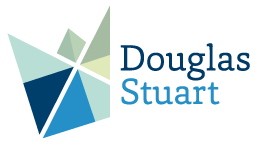We’ve all been there. We find the perfect candidate – their CV is a fantastic fit. If only you could get it under the nose of the right person, it would be a hole in one.
And then it gets a little stuck.
The CV sits in an inbox for a while. Maybe a week passes. Maybe two.
Finally, the hiring manager gets through their email backlog and casts their eyes on it. They realise this is just the person they have needed for the last two years!
Slow, slow, fast
Suddenly everything happens at speed. The out-of-sight candidate is invited in for an interview. The Hiring Manager loves them. They’re having dinner next week to discuss strategy. They’ve even discussed box sets. It’s the beginning of a beautiful friendship and the candidate’s promised not to play the field.
There’s just a couple of box ticking exercises. ’Shouldn’t take long’. Just a couple of people to meet. A presentation to deliver, an interview with HR, a personality test, and business plan to submit.
Just as suddenly, the pace slows down. Diaries are difficult to synchronize. There’s hours of preparation to do and additional information to provide. The candidate has to keep taking time off work to make interviews, organising travel becomes unwieldy, they have to ring HR to check on the status of the recruitment process. They begin to wonder, ‘ Does the company really want me as much as the Hiring Manager says they do?”
Before you know it a month has passed.
Inevitably, they play the field. Interest wanes. They feel neglected.
They accept another offer. From your competitor.
Lengthy recruitment processes cost money
It doesn’t matter if you’re an executive search consultant as I am, or an HR manager for a large global organisation. Every time you lose a candidate who’s perfect for the job because of unwieldy recruitment processes, you lose a little bit off your bottom line. And take a major hit off your recruitment brand.
A recent study by Glass door found that the average length of the interview process in the US is 22.9 days, rising to an average of 28.9 days in the UK. This upward trend in the length of recruitment processes is set to stay.
The larger the organisation is, typically, the longer the recruitment cycle. It’s not surprising – the depth of administrative policy, growing bureaucracy, layers of candidate assessment, screening and reviews – these are all things put in place to help identify the best candidates. But all too often the best candidates get lost in the over -processed selection machine.
Companies in the oil, gas, energy and utilities are amongst the worst offenders for lengthy screening processes. Attracting the best talent, often in highly specialised roles, that require travel and overseas postings, necessarily comes with added levels of bureaucracy and red tape.
A recruitment process that is streamlined, and effective
But even when multiple layers of candidate screening and benchmarking exercises are needed to identify the right talent – and let’s not forget – safeguard companies from the expense of hiring the wrong candidate, there are still effective ways to ensure that they are streamlined and effective
Recruitment best practice
Over the next few month’s I will be writing about what best practice looks like and how to optimize your recruitment function. We can talk about process all we like, but ultimately recruitment involves us as humans and it’s impossible to create a ‘one size fits all’ approach. To secure that top talent, that one elusive candidate, we have to have a sense of urgency and a system that is robust, yet flexible. Easier said than done.
If you would like to discuss how we can help you optimise your recruitment process, please call James Usher, +44 (0) 161 967 9670, or j.usher@douglas-stuart.com


